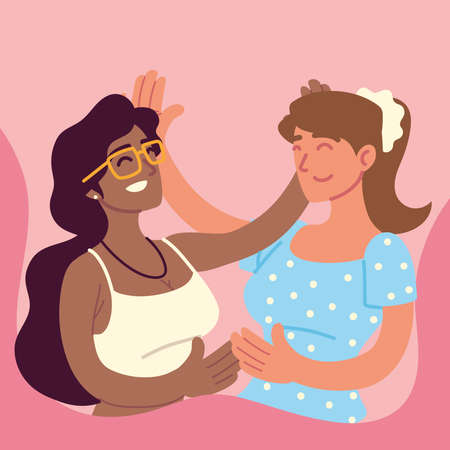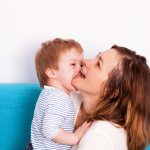Nursery
Creating a safe nursery is essential for your babys well-being. This is where your little one will sleep, play, and spend a lot of time, so taking the right precautions is key.
Crib Safety
- Ensure your babys crib meets current safety standards set by the Consumer Product Safety Commission (CPSC).
- The crib mattress should fit snugly with no gaps around the edges.
- Avoid using pillows, blankets, or stuffed animals in the crib to reduce the risk of suffocation.
- Make sure the slats are no more than 2 3/8 inches apart to prevent your baby from getting stuck.
Secure Furniture
Toddlers love to explore and climb, so securing furniture is crucial to prevent accidents.
| Furniture Item | Safety Precaution |
|---|---|
| Dresser & Bookshelves | Anchor them to the wall with anti-tip straps to prevent tipping. |
| Changing Table | Ensure it has safety straps and never leave your baby unattended. |
| Cords & Blinds | Keep cords out of reach or use cordless window coverings to avoid strangulation hazards. |
Avoid Small Objects & Choking Hazards
- Babies love to grab and put things in their mouths, so keep small objects out of reach.
- Avoid decorative items that have loose parts or sharp edges.
- If an object can fit inside a toilet paper roll, its too small for your baby to play with.
Add a Baby Monitor
A baby monitor helps you keep an eye on your little one even when youre not in the room.
- Choose a monitor with video capabilities for added security.
- If using a corded monitor, keep cords at least three feet away from the crib.
- A Wi-Fi-enabled monitor lets you check on your baby from anywhere using your phone.
Taking these steps will help create a safe and comfortable nursery where your baby can rest and grow securely.
2. Living Room
The living room is where your family spends a lot of time together, so its important to make it a safe space for your baby. From furniture to small objects, there are several things to watch out for.
Anchor Heavy Furniture
Babies love to explore and pull themselves up on furniture. To prevent accidents, secure heavy furniture like bookshelves, TV stands, and cabinets to the wall using safety anchors or straps.
Cover Sharp Edges
Coffee tables, TV stands, and other furniture often have sharp corners that can be dangerous for a crawling baby. Use corner guards or edge protectors to soften these areas and reduce the risk of injury.
Keep Electrical Outlets Covered
Babies are naturally curious and may try to stick their fingers or objects into electrical outlets. Use outlet covers or plug protectors to keep them safe.
Store Small Objects Out of Reach
Small objects like coins, buttons, or toys with detachable parts can pose choking hazards. Keep these items stored in high places or inside closed containers.
Be Careful with Remote Controls and Cords
Remote controls often have small batteries that can be dangerous if swallowed. Keep remotes out of reach and ensure battery compartments are secure. Also, tuck away power cords and charging cables to prevent strangulation risks.
Living Room Babyproofing Checklist
| Item | Safety Measure |
|---|---|
| Heavy Furniture | Anchor to the wall |
| Sharp Edges | Add corner guards |
| Electrical Outlets | Use outlet covers |
| Small Objects | Store out of reach |
| Remote Controls & Cords | Keep away from baby’s reach |
By taking these precautions, you can create a safer environment for your little one while still enjoying family time in the living room.
![]()
3. Kitchen
The kitchen can be one of the most hazardous areas for a baby. With hot surfaces, sharp objects, and cleaning supplies, its important to take extra precautions to keep your little one safe.
Stove and Oven Safety
Babies are naturally curious and may try to reach for stove knobs or open the oven door. To prevent accidents:
- Use stove knob covers to prevent little hands from turning on burners.
- Turn pot handles inward so they are out of reach.
- Never leave a hot stove unattended.
Cabinet and Drawer Locks
Kitchens have many cabinets and drawers that store items dangerous for babies, such as knives, glassware, and cleaning products. Use childproof locks to secure them and prevent access.
Safe Storage of Hazardous Items
Keep all harmful substances and sharp objects well out of reach. Store them in high cabinets or locked drawers. Heres a simple guide:
| Item | Best Storage Location |
|---|---|
| Cleaning Supplies | High cabinet with childproof lock |
| Knives & Sharp Tools | Drawer with safety lock or knife block out of reach |
| Glassware & Heavy Dishes | Upper shelves away from edges |
Avoiding Burns and Spills
Hot food and drinks can easily spill and cause burns. Always:
- Keep hot dishes and beverages away from table edges.
- Avoid carrying your baby while handling hot food or liquids.
- Use placemats instead of tablecloths to prevent accidental pulling.
Additional Safety Tips
- Unplug small appliances when not in use.
- Avoid using tablecloths that babies can pull down.
- Keep trash cans covered or stored in a secured area.
- If possible, use a safety gate to block off the kitchen when cooking.
By taking these precautions, you can make your kitchen a much safer place for your baby as they explore their world.
4. Bathroom
The bathroom can be one of the most hazardous rooms for a baby, so taking the right precautions is essential. From water temperature to storage safety, here’s how you can make your bathroom a safer place for your little one.
Install Toilet Locks
Babies are naturally curious, and an open toilet can be both a drowning hazard and a place for germ exposure. A toilet lock will prevent your baby from lifting the lid and playing with the water inside.
Adjust Water Heater Temperature
Hot water can cause serious burns in just seconds. To keep bath time safe, set your water heater temperature to no higher than 120°F (49°C). This helps prevent accidental burns if your baby turns on the faucet.
Always Supervise Bath Time
Never leave your baby alone in the bathtub, even for a moment. Babies can drown in as little as an inch of water. Always stay within arm’s reach and gather all necessary bath items before placing your baby in the tub.
Store Medications and Toiletries Safely
Many common bathroom items, such as medications, mouthwash, and lotions, contain harmful ingredients if ingested. Keep these products locked away in cabinets that are out of reach.
Safe Storage Tips
| Item | Storage Method |
|---|---|
| Medications | Locked cabinet, high shelf |
| Cleansers & Chemicals | Child-proof cabinet locks |
| Razors & Sharp Objects | Away from edges, locked drawer |
| Bath Toys | Dried after use to prevent mold |
Taking these simple steps can make your bathroom a much safer environment for your baby. Always double-check safety measures regularly as your child grows and becomes more mobile.
5. Stairs and Hallways
Stairs and hallways can be tricky areas for little ones who are just learning to crawl or walk. To keep your baby safe, its important to take a few key precautions.
Use Baby Gates
Install sturdy baby gates at both the top and bottom of staircases. This prevents your child from accidentally falling down the stairs or climbing up unsupervised.
Check Railings
Make sure railings are secure and that there are no wide gaps where a baby could get stuck or slip through. If gaps are too large, consider installing a safety barrier.
Remove Tripping Hazards
Loose rugs, cords, and clutter in hallways can pose tripping hazards. Keep pathways clear and secure rugs with non-slip pads.
Keep Hallways Well-Lit
A well-lit hallway helps prevent falls, especially at night. Use nightlights or motion-sensor lights to ensure visibility without disturbing sleep.
Quick Safety Checklist
| Safety Measure | Why Its Important |
|---|---|
| Install baby gates | Prevents falls on stairs |
| Secure railings | Avoids getting stuck or slipping through gaps |
| Remove loose rugs | Reduces tripping hazards |
| Add nightlights | Makes hallways safer in the dark |
Taking these steps will help create a safer home for your baby as they explore their surroundings.


